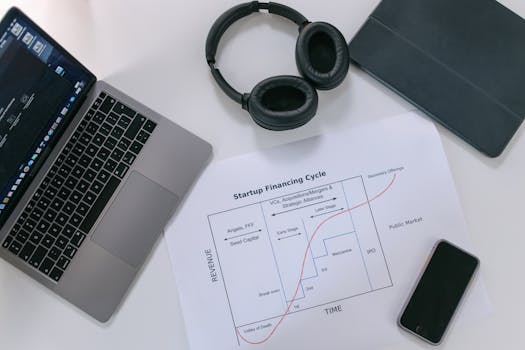Career
Unlocking Innovation: Fostering Creativity in Traditional Professions
Discover how fostering creativity in traditional professions like teaching and engineering leads to improved outcomes and job satisfaction for all.
Advertisement
Creativity is often seen as a trait exclusive to artistic fields. However, it plays a crucial role in traditional professions as well. By fostering creativity, professionals in these fields can enhance their work and drive innovation.
Incorporating creativity into traditional roles such as teaching, engineering, and healthcare can lead to improved problem-solving and increased job satisfaction. Consequently, this can result in better outcomes for both professionals and their clients.
Implementing effective strategies to encourage creative thinking is essential. This article explores various methods that professionals can utilize to nurture creativity within traditional careers.
Understand the Importance of Creativity
Recognizing the value of creativity is the first step in fostering it. Innovative thinking is essential for adapting to changes and challenges. It enhances both individual and collective productivity.
Creativity helps to develop new solutions, streamline processes, and improve communication within teams. In essence, organizations that value creativity are more likely to thrive in competitive environments.
Furthermore, research shows that creative workplaces foster employee satisfaction. When workers can express themselves, they become more engaged and committed, which ultimately benefits the organization.
Encouraging creative expression in traditional professions can transform the workplace culture. By prioritizing creativity, organizations can inspire their teams to think outside the box.
Ultimately, understanding creativity’s significance sets the foundation for establishing an environment that promotes innovative thinking across various sectors.
Create a Stimulating Environment
An inspiring workspace inspires creativity. To foster innovative thinking, the physical and psychological environment must be conducive to exploration and experimentation.
Consider enhancing your workspace with colors that stimulate creativity. Moreover, incorporating elements of nature, such as plants or windows with views, can boost mood and inspire fresh ideas.
Additionally, providing comfortable areas for brainstorming and collaboration encourages free thinking and open discussions among colleagues. Soft seating and communal tables facilitate interaction.
It’s equally important to eliminate distractions that inhibit focus. Encouraging quiet zones within the workspace allows for individual reflection and creative problem-solving.
Creating a stimulating environment requires thoughtful adjustments that consider both the physical space and the emotional atmosphere. Such changes promote creative thinking and collaboration.
Encourage Collaboration
Collaboration breeds creativity. Bringing together diverse perspectives sparks fresh ideas and innovative solutions. Encourage teamwork in projects and brainstorming sessions.
Utilize techniques like cross-departmental collaborations. These instances allow individuals from different areas to share insights and approaches, leading to unexpected breakthroughs in traditional fields.
Establishing mentorship programs can also cultivate creativity. Experienced professionals can provide guidance while encouraging junior colleagues to think independently and explore unconventional ideas.
Moreover, regular team-building activities can strengthen relationships among colleagues. A cohesive team is more likely to share and support creative endeavors.
Ultimately, fostering a collaborative culture is vital. Organizations that promote teamwork can create a breeding ground for creativity and innovation.
Implement Creative Problem-Solving Techniques
Creative problem-solving techniques stimulate innovative thinking. Utilizing strategies like design thinking allows professionals to approach challenges from various perspectives.
Encourage your team to brainstorm without judgment initially. Once ideas are generated, they can be refined for feasibility and practicality. This method promotes imaginative thinking.
Additionally, utilizing mind mapping can help visualize relationships between ideas. This technique fosters a deeper understanding of complex problems and facilitates innovative solutions.
Encouraging role-playing scenarios during brainstorming can also yield new insights. This creative technique enables individuals to view situations differently, resulting in unexpected solutions.
By adopting creative problem-solving techniques, professionals can unlock new pathways for innovation and growth in traditional roles.
Incorporate Continuous Learning
Continuous learning fosters a culture of creativity. Encourage professionals to explore new skills and knowledge beyond their immediate job responsibilities.
Providing access to workshops, online courses, and seminars enables employees to acquire fresh perspectives and ideas. This approach contributes to innovative thinking.
Moreover, organizing “lunch and learn” sessions encourages knowledge sharing. These informal gatherings allow team members to discuss skills, discoveries, and insights, promoting creativity.
Encourage employees to bring back what they’ve learned and integrate new insights into their workflows. This practice fosters a culture of knowledge sharing and innovation.
Ultimately, continuous learning helps prevent stagnation. Professionals who actively seek knowledge are more likely to develop innovative solutions in their respective fields.
Embrace Failure as a Learning Tool
Failure is often viewed negatively, but embracing it as a learning tool can promote creativity. Understanding that not every idea will succeed encourages a risk-taking mindset.
Creating a safe space where employees feel comfortable sharing their failures fosters resilience and creativity. It’s crucial to highlight lessons learned rather than dwell on mistakes.
Organize reflections on past failures to highlight insights gained. This practice encourages a growth mindset, allowing professionals to see challenges as opportunities for improvement.
Incorporating a “fail fast, learn faster” mantra can inspire teams to innovate boldly. When employees prioritize creativity over perfection, they become more open to experimentation.
Ultimately, embracing failure fosters an environment where creativity can blossom. Professionals who view setbacks as learning experiences contribute to a more innovative culture.
Utilize Technology to Enhance Creativity
Technology plays a significant role in enhancing creativity. Tools and platforms can streamline workflows, making it easier for professionals to collaborate and innovate.
Utilizing software for project management and collaborative brainstorming can simplify communication. Cloud-based tools enable real-time collaboration among team members, regardless of location.
Moreover, integrating artificial intelligence can provide data-driven insights, allowing professionals to chart new paths in traditional fields. This can lead to innovative strategies and solutions.
Encouraging the use of virtual reality and simulation tools can also stimulate creativity. By experiencing scenarios virtually, individuals can explore new approaches and ideas.
In essence, leveraging technology enhances creative capabilities. Professionals should stay updated on emerging tools and incorporate them to improve creativity in their work.
Conclusion
Fostering creativity in traditional professions is essential for innovation and growth. By implementing the strategies discussed, organizations can create environments conducive to creative thinking.
From encouraging collaboration to embracing technology, various approaches can stimulate innovative ideas. Recognizing the importance of creativity sets the foundation for a more dynamic workplace.
Ultimately, organizations that prioritize creativity not only improve outcomes but also enhance employee satisfaction and engagement. Embracing these strategies positions traditional professions for success.





